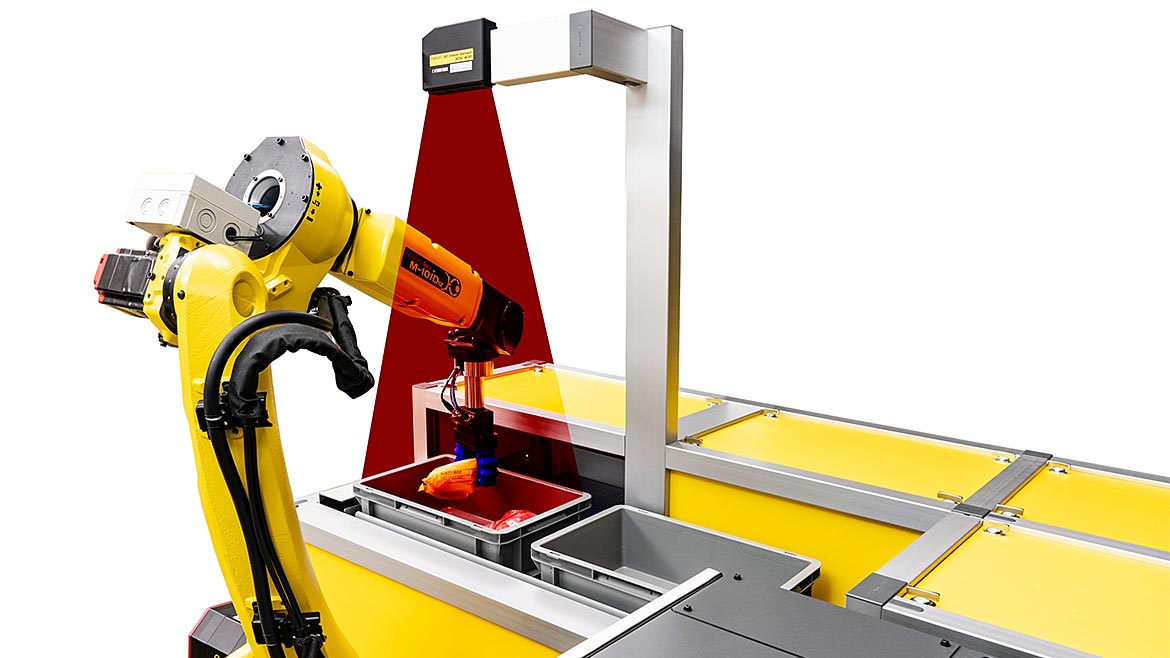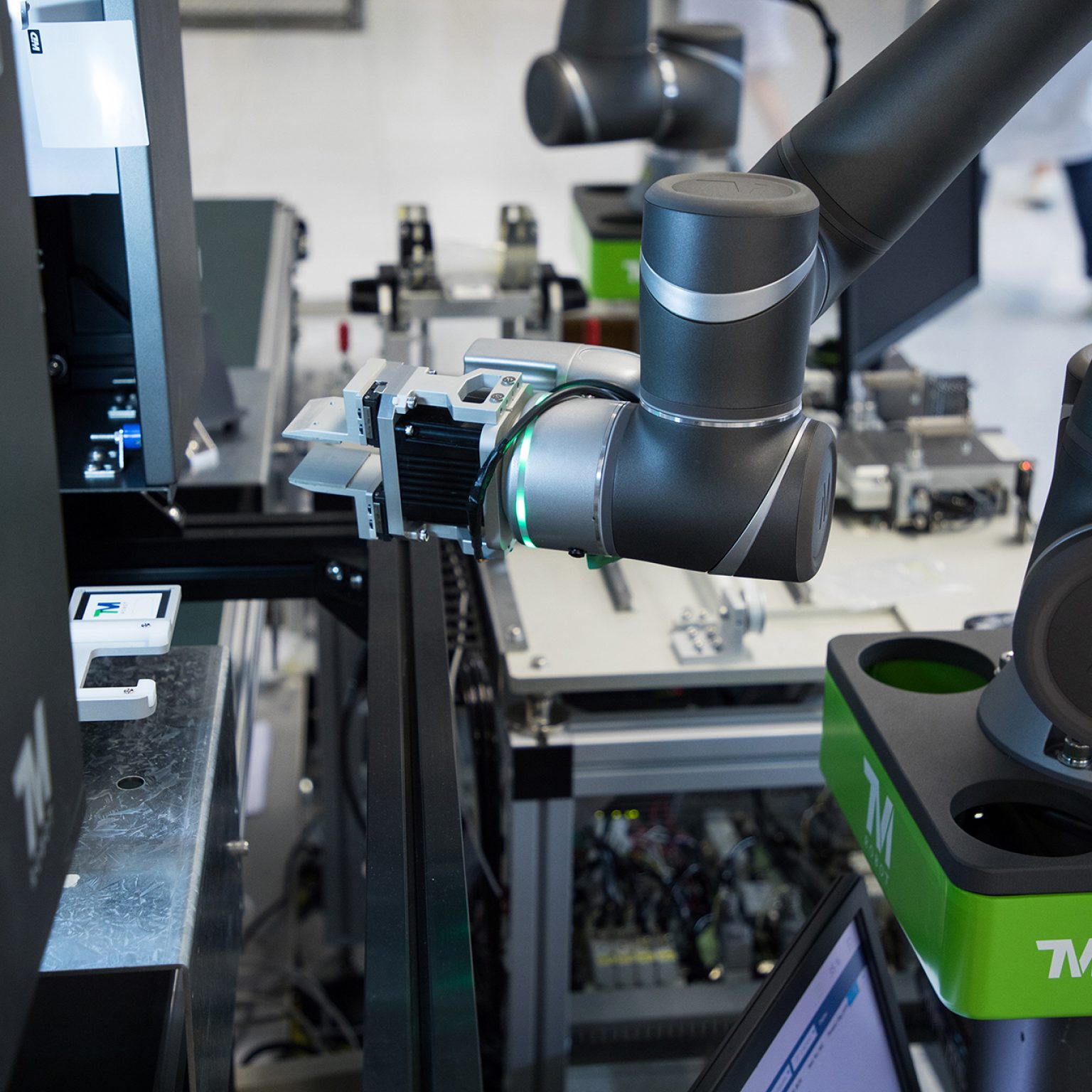How to choose the right vendor for optical fibre diameter analyser
Why Robotic Vision Is Vital for Advancing Precision in Manufacturing Industries
Robotic vision has actually become an essential part in modern-day production. It equips machines to examine visual information with amazing precision. This ability improves top quality control and minimizes the likelihood of defects. As industries venture for higher effectiveness, comprehending the complexities of robotic vision becomes crucial. The interplay between technology and operational procedures increases important concerns about future developments and their implications. What lies ahead for precision in manufacturing?
Recognizing Robotic Vision Modern Technology

Enhancing Quality Control With Robotic Vision

Increasing Functional Performance Through Automation

Automating production procedures via robotic vision significantly enhances manufacturing speed, enabling for quicker turnaround times. This technology additionally decreases error prices, making certain greater accuracy in procedures. In addition, streamlined source management is achieved, causing much more efficient use of products and labor.
Boosted Manufacturing Rate
While the combination of robotic vision in production has changed functional procedures, its most substantial benefit depends on improved manufacturing rate. By utilizing advanced picture processing and real-time data analysis, robotic vision systems can promptly determine and react to production needs. This accelerated responsiveness gets rid of delays typically connected with hands-on examination and decision-making processes. In addition, these systems can run constantly without exhaustion, making sure that production lines maintain high throughput. The capacity to detect and deal with issues instantly further enhances workflows, enabling suppliers to maximize output levels (optical measurement system). Companies profit from reduced cycle times and boosted efficiency, placing them competitively in the market. Improved manufacturing speed, driven by robotic vision technology, inevitably leads to improved operational effectiveness throughout the manufacturing landscape
Reduced Error Fees
As manufacturing rate rises, maintaining precision ends up being vital in producing procedures. Robotic vision systems considerably add to decreased mistake rates by giving specific dimensions and real-time assessments. These innovative systems use high-resolution video cameras and advanced algorithms to find problems, misalignments, or inconsistencies in items throughout setting up. By automating top quality control, manufacturers can swiftly identify and remedy issues that human inspectors could ignore. This not just decreases waste yet also boosts total item top quality. In addition, the combination of robotic vision reduces variability in production, making sure that each thing satisfies strict specifications. Subsequently, producers experience less pricey recalls and enhanced client contentment, ultimately resulting in a much more effective and lucrative functional design.
Structured Source Management
Reliable source administration is crucial for making best use of operational efficiency in manufacturing, especially when incorporated with robotic vision systems. These systems enhance the capacity to keep an eye on and assign resources precisely, making certain that products and labor are utilized efficiently. By utilizing sophisticated visual modern technologies, manufacturers can recognize inefficiencies in real time, reducing waste and improving manufacturing timelines. On top of that, robotic vision allows specific stock monitoring, lessening the danger of overstocking or stockouts. Automation of these processes not just improves procedures yet additionally permits human workers to concentrate on higher-value jobs, cultivating development and performance. Therefore, firms can accomplish considerable price financial savings while maintaining top notch criteria, ultimately placing themselves extra competitively in the sector.

Reducing Human Error in Production Processes
Human error continues to be a significant difficulty in manufacturing processes, often resulting in expensive errors and inadequacies. In atmospheres where accuracy is vital, even small gaps in judgment can lead to defective products or hold-ups in manufacturing timetables. Robotic vision systems can minimize these dangers by supplying accurate and regular monitoring company website of manufacturing procedures. By automating tasks such as high quality control and production line assessments, these systems lower the reliance on human oversight, consequently reducing the possibility for errors.Moreover, robotic vision innovation improves information precision, permitting for real-time modifications based upon visual feedback. This capability ensures that any kind of variances from developed requirements are quickly recognized and corrected, better reducing the likelihood of errors. As suppliers progressively take on robotic vision, they can expect not only to boost precision and performance but also to foster a much safer working environment by reducing the pressure on human operators.
The Function of Expert System in Robotic Vision
Expert system significantly enhances robotic vision by using machine learning formulas and advanced photo handling methods. These innovations allow robots to interpret visual data with greater accuracy, improving both performance and precision in producing setups. Therefore, the combination of AI right into robotic vision systems represents an essential improvement in automation.
Artificial Intelligence Algorithms
Artificial intelligence algorithms are transforming robotic vision in manufacturing by enabling machines to translate and assess aesthetic data with exceptional precision. These formulas allow robots to pick up from huge datasets, adjusting to brand-new circumstances and improving their performance with time. By leveraging techniques such as supervised and not being watched understanding, robotic systems can identify patterns and anomalies in real-time, which improves quality control and reduces waste. In addition, artificial intelligence assists in far better decision-making processes, permitting robots to maximize their actions based upon found out experiences. As these algorithms evolve, they empower robotic vision systems to perform progressively intricate jobs, inevitably driving efficiency and accuracy in manufacturing procedures. The assimilation of artificial intelligence subsequently plays a pivotal function in the advancement of robotic vision modern technology.
Image Handling Strategies
Enhancing the capabilities of robotic vision, picture handling strategies play an important duty in allowing systems to analyze aesthetic information successfully. These techniques include formulas that enhance picture quality, remove pertinent functions, and identify patterns within aesthetic data. By using approaches such as edge discovery, division, and item acknowledgment, robotic systems can recognize and categorize elements with amazing precision. The combination of expert system better enhances these methods, enabling adaptive knowing and improved decision-making in dynamic settings. Consequently, robotic vision systems can not just identify flaws but also enhance procedures, leading to raised performance and precision in production. Consequently, the continuous development of photo handling techniques continues to be critical to the advancement of robotic vision in industrial applications.
Future Patterns in Robotic Vision for Production Industries
As sectors progressively prioritize performance and precision, the her explanation evolution of robotic vision modern technology is established to transform producing processes significantly. Future patterns show substantial developments in expert system and maker understanding combination within robotic vision systems. These improvements will certainly enhance real-time decision-making capabilities, read review permitting robots to adjust to varying problems autonomously. Additionally, the fostering of 3D vision systems is expected to boost, supplying more accurate spatial recognition and item recognition. Partnerships between robotics and human employees might also develop, with sophisticated vision systems assisting in safer and much more reliable communications. In addition, making use of side computer will likely enable faster information handling, minimizing latency and enhancing functional responsiveness. As these trends unravel, the production industry stands to take advantage of enhanced quality control, lowered waste, and streamlined operations, ultimately leading to increased competition in a swiftly altering market.
Frequently Asked Questions
How Does Robotic Vision Differ From Typical Machine Vision Solutions?
Robotic vision incorporates sophisticated formulas and real-time handling, making it possible for dynamic interpretation and communication with environments. On the other hand, typical equipment vision largely focuses on fixed photo capture and analysis, limiting versatility and responsiveness in complex manufacturing scenarios.
What Industries Advantage Most From Robotic Vision Innovation?
Numerous sectors benefit substantially from robotic vision innovation, including auto, electronics, and food handling. These fields take advantage of boosted precision, efficiency, and flexibility, eventually boosting manufacturing quality and minimizing operational expenses via sophisticated automation services.
Can Robotic Vision Equipments Be Integrated With Existing Production Devices?
Robotic vision systems can indeed be incorporated with existing production equipment. This integration boosts operational performance, permitting for smooth cooperation between traditional machinery and advanced aesthetic modern technology, eventually boosting total production processes and outcomes.
What Are the Prices Related To Applying Robotic Vision Solutions?
The expenses linked with applying robotic vision solutions vary considerably, affected by aspects such as system complexity, required software program, hardware elements, combination with present equipment, and ongoing maintenance expenses, ultimately influencing overall roi.
How Do Maintenance and Assistance for Robotic Vision Solutions Job?
Upkeep and support for robotic vision systems entail normal software updates, hardware inspections, and troubleshooting. optical measurement system. Vendors typically provide service contracts, ensuring prompt support and decreasing downtime to keep peak performance and reliability in commercial applications